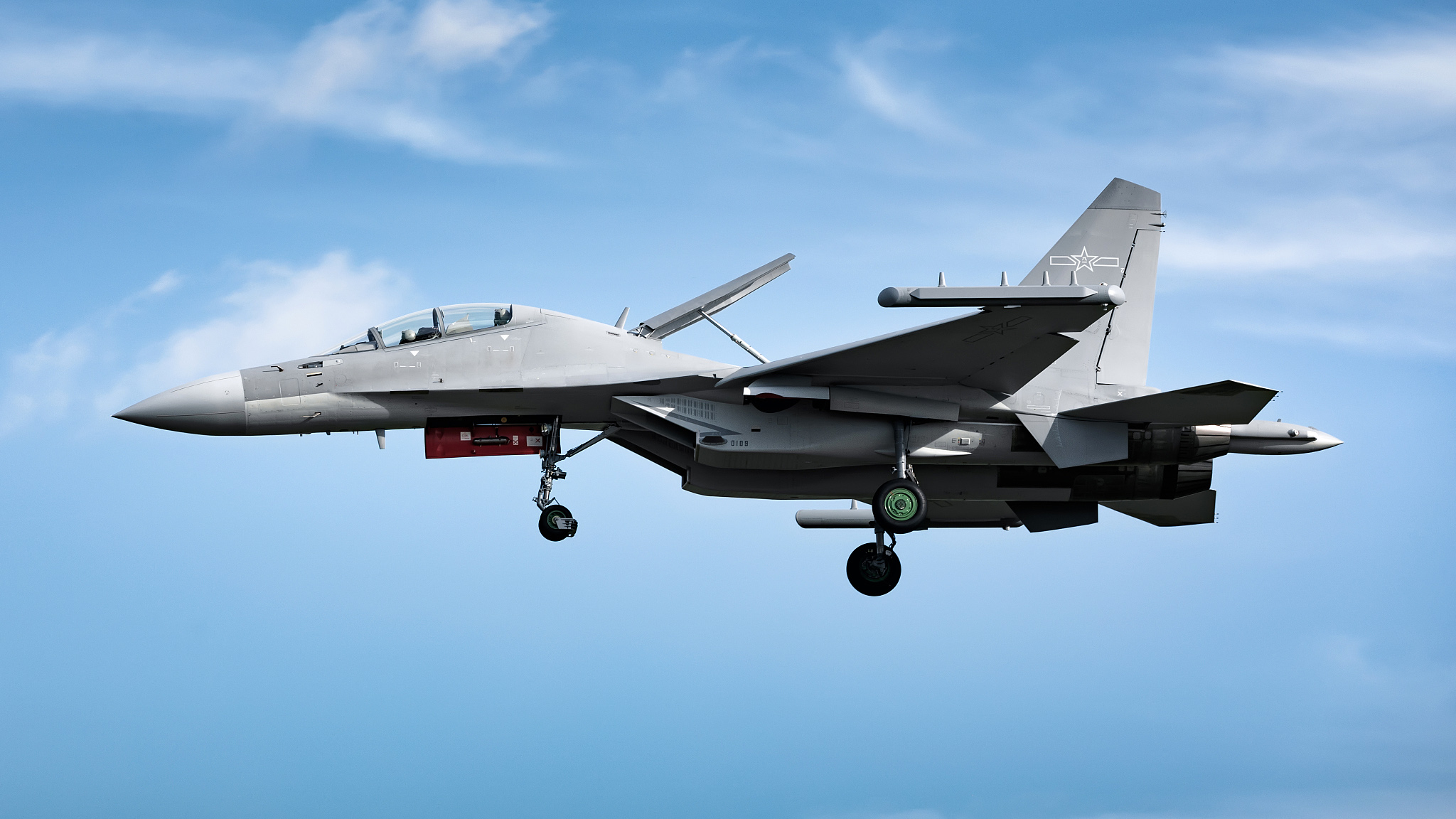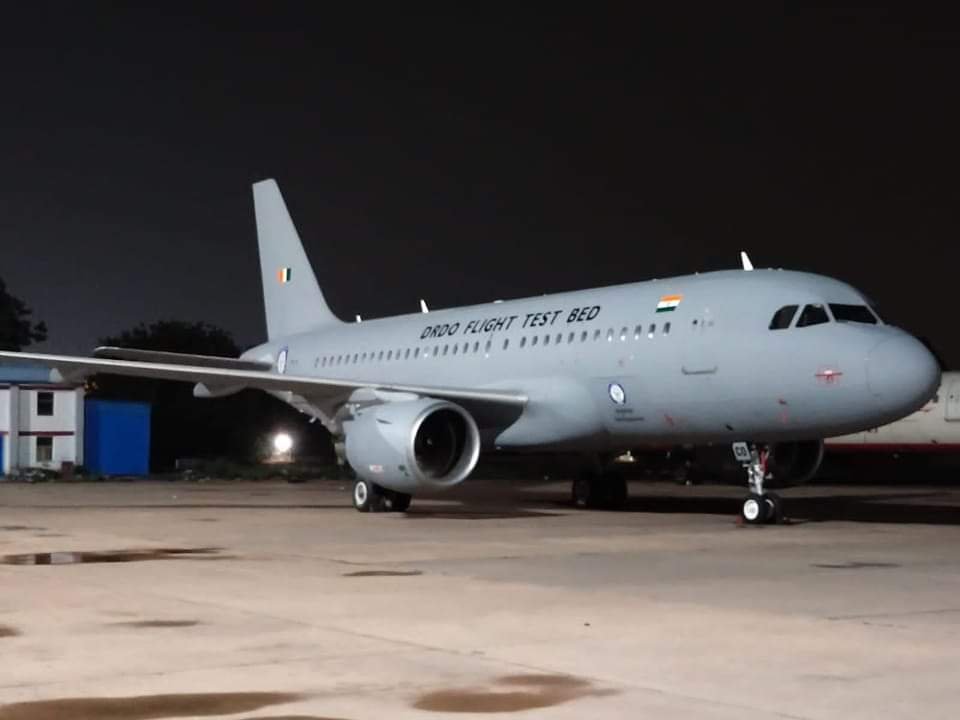SOURCE: AFI

The National Institute of Ocean Technology (NIOT) has announced a significant milestone in oceanic research with the successful execution of the first high-resolution deep sea exploration and imaging at approximately 4500 meters depth at the Hydrothermal Sulphides fields located in the Central and South West Indian Ridges in the Southern Indian Ocean. This pioneering mission was accomplished in December 2024, during an expedition aboard the research vessel ‘Sagar Nidhi.’
The expedition was spearheaded by Dr. N.R. Ramesh, Scientist-G at NIOT, with contributions from a team of scientists from NIOT and the National Centre for Polar and Ocean Research (NCPOR). This collaborative effort utilized the Autonomous Underwater Vehicle (AUV) known as the Ocean Mineral Explorer-OMe 6000, which is part of NIOT’s assets under the Ministry of Earth Sciences (MoES).
Continue readingSOURCE: IDRW.ORG.

India’s nuclear-powered ballistic missile submarine (SSBN) program continues to make significant strides, with the induction of the INS Arighaat (S3) into active service at the end of August 2024. Following in the footsteps of its predecessor, INS Arihant, the INS Arighaat marks a significant evolution in India’s strategic deterrence capabilities.
Commissioned in August 2016, the INS Arihant was India’s first indigenously built SSBN. The submarine has a displacement of 6,000 tonnes and is powered by an 83 MW pressurized light-water reactor (PLWR) using enriched uranium. Its successful integration into the Indian Navy represented a critical milestone in India’s pursuit of a credible sea-based nuclear deterrent.
Continue readingSOURCE: IDRW.ORG

In a tribute to the visionary former President and eminent scientist Dr. APJ Abdul Kalam, the Defence Research and Development Organization (DRDO) has unveiled the fifth edition of its prestigious innovation contest, ‘Dare to Dream 5.0’. This edition seeks to push the boundaries of technological innovation, particularly in addressing the complex challenge of emergency evacuation for helicopter pilots.
Helicopters, unlike fixed-wing aircraft, do not typically feature ejection seats due to the presence of rapidly rotating blades, which complicate safe ejection. In emergencies, especially engine failures during sea-bound operations, pilots rely on life-saving equipment like the Helicopter Emergency Egress Device to escape from the cockpit if they need to ditch the helicopter in water. However, this solution is less effective or entirely inapplicable during land-based operations.
Continue readingSOURCE: AFI

The Indian Air Force (IAF) has officially issued a Request for Proposal (RFP) to Hindustan Aeronautics Limited (HAL) for the procurement of an additional 97 Tejas Mark-1A fighter jets. This step follows the preliminary approval granted by the Defence Acquisition Council (DAC), marking a significant expansion in the IAF’s fleet of indigenous light combat aircraft.
The new batch of Tejas Mark-1A jets is set to feature over 65% Indigenous content, aligning with India’s vision for self-reliance in defence manufacturing. The Mark-1A variant represents a leap in capability from the original Tejas Mk-1 Light Combat Aircraft (LCA), boasting several enhancements:
Continue readingSOURCE: AFI

Amidst reports that Azerbaijan, commonly referred to as Baku, has expressed interest in purchasing Indian-made weaponry, defence analyst Ranesh Rajan has highlighted a significant geopolitical caveat. Speaking to the AFI, Rajan stated that Baku must first distance itself from Islamabad and align with India’s stance on Kashmir before New Delhi would entertain the idea of selling Indian-made weapon systems to Azerbaijan.
The relationship between Baku and Islamabad has been notably warm, with Azerbaijan openly supporting Pakistan’s position on the Kashmir issue. This stance has historically been at odds with India’s national interests. Rajan’s comments suggest that India’s willingness to engage in defense trade with Azerbaijan would be contingent upon a shift in Baku’s foreign policy regarding Kashmir and its diplomatic relations with Pakistan.
Continue readingSOURCE: AFI

In a controversial move, Mahfuj Alam, who serves as a special aide to Dr. Muhammad Yunus and advisor to Bangladesh’s interim government, took to his personal social media to advocate for the annexation of certain Indian territories. In a now-deleted post on his verified @facebook account earlier today, Alam shared a map suggesting Bangladesh should expand into parts of India’s eastern and northeastern regions to achieve true independence and liberation from what he describes as Indian “containment” and “ghettoization” policies.
Alam’s post drew parallels between the 1975 coup, during which Sheikh Mujibur Rahman was assassinated, and the recent 2024 protests that led to Sheikh Hasina’s departure, framing both events as necessary to break free from Indian “reliance” and “hegemony”. He argued that for Bangladesh to be “truly victorious”, it must “come out of its cage” by expanding its geographical boundaries. He emphasized that the work towards this goal has only just begun, indicating a long-term vision for Bangladesh’s strategic position in the region.
Continue readingSOURCE: AFI

In recent years, two Chinese fighter aircraft have drawn significant attention in military aviation circles: the fifth-generation J-20 Mighty Dragon, comparable to the F-35, F-22, and Su-57, and the J-16, a multi-role fighter designed to rival Western aircraft like the F/A-18E/F Super Hornet and Russia’s advanced Su-35. Among these, the J-16 is increasingly regarded as the “ultimate Flanker.” But is it truly deserving of this reputation?
The J-16 is one of five Flanker derivatives produced domestically by China’s Shenyang Aircraft Corporation. Its lineage traces back to the Russian Su-27 family, beginning with the J-11, China’s first Flanker variant produced under a license agreement in the late 1990s. Over the years, China transitioned from assembling Russian kits to designing indigenous upgrades, eventually developing the J-11B, a multi-role fighter that marked a departure from Russian reliance.
Continue readingSOURCE: AFI

Nagpur-based Economic Explosives Ltd (EEL) has taken a significant step in advancing India’s unmanned aerial vehicle (UAV) capabilities by establishing a 1.4 km runway and testing facility dedicated to long-range drones. This facility, touted as the largest of its kind in the private sector in India, marks a critical milestone in the nation’s push for indigenous drone development.
The newly established testing facility will serve as a base for trials of the Medium Altitude Long Endurance (MALE) UAV under development by EEL. The company, which previously proposed the development of the MALE UAV for the Indian Armed Forces, aims to leverage this facility to expedite the testing and refinement process for the platform.
Continue readingSOURCE: RAUNAK KUNDE / NEWS BEAT / IDRW.ORG

India is on the brink of finalizing a crucial defense deal with France for the acquisition of 26 Rafale Marine aircraft, specifically for the Indian Navy. This agreement not only enhances the naval aviation capabilities but also includes a significant order for additional long-range air-to-air Meteor missiles, which will serve both the Indian Navy and the Indian Air Force’s existing fleet of 36 Rafale jets.
The Rafale Marine, a naval variant of the renowned multirole fighter jet, will be deployed on India’s aircraft carriers, notably the INS Vikrant and INS Vikramaditya, augmenting the operational reach and combat effectiveness of the Indian Navy. These aircraft are designed to operate in the harsh marine environment, featuring reinforced structures and adaptations for carrier-based operations.
Continue readingSOURCE: RAUNAK KUNDE / NEWS BEAT / IDRW.ORG

The Indian Army recently conducted rigorous testing of the Garuda 105 Go Anywhere Gun, a groundbreaking mobile artillery system developed by Kalyani Strategic Systems Limited (KSSL). The testing included an airdrop operation from an Indian Air Force (IAF) C-17 Globemaster, showcasing the system’s capability to be deployed swiftly to any required location, thus underlining its strategic deployability and tactical mobility.
Designed as a lightweight, modular, and high-performance howitzer, the Garuda 105 aims to redefine the standards in light artillery with its advanced features. It stands out as a superior alternative to traditional systems like the 106mm Recoilless Rifle, 120mm Mortar, and other 105mm artillery due to its unique attributes, including low-cost precision strike capabilities.
Continue readingSOURCE: RAUNAK KUNDE / NEWS BEAT / IDRW.ORG

The Indian fighter jet development landscape is witnessing a significant technological advancement with the involvement of the DRDO-owned A319 ‘Anusadhan’ as a flying test bed for the Advanced Medium Combat Aircraft (AMCA) program. This move marks a crucial step toward enhancing India’s self-reliance in aerospace technology and military aviation.
The ‘Anusadhan’, originally an Air India A319, was repurposed by the Defence Research and Development Organisation (DRDO) for testing various indigenous technologies. Now, it is set to be instrumental in the testing phase of the AMCA, India’s ambitious fifth-generation stealth fighter jet project. The aircraft’s primary role will involve testing and validating the avionics, sensors, and other systems that will be integral to the AMCA’s performance.
Continue readingSOURCE: AFI

In a move to further strengthen its aerial capabilities, the Nepali Army is reportedly considering the acquisition of additional Dhruv Advanced Light Helicopters (ALH) from India’s Hindustan Aeronautics Limited (HAL). This development would be a continuation of the existing relationship where Nepal already operates three Dhruv Mk III helicopters, which have proven invaluable in the country’s challenging geographic landscape.
The Dhruv Mk III, known for its robust performance, comes equipped with Shakti engines, offering significant power for operations in high-altitude environments. This helicopter model features an advanced glass cockpit and sophisticated avionics, making it a versatile asset for the Nepali Army. With a weight class of 5.5 tons, the Dhruv ALH is designed to perform multiple roles, from troop transport and medical evacuation to reconnaissance and rescue operations. Its capabilities in long-distance flights, vertical climbs, and complex manoeuvring make it particularly suited to the rugged and mountainous terrain of Nepal.
Continue readingSOURCE: AFI

A viral video showcasing the Gridbots VIPER robot in action has highlighted its cutting-edge capabilities in cleaning and inspecting artillery and tank gun barrels. Currently being tested by the Indian Army at select locations, this advanced system is poised to replace the manual cleaning process, bringing efficiency, precision, and automation to a critical maintenance task.
The Gridbots VIPER robot is equipped with the zSCAN, one of the most accurate laser 3D profilometers. This advanced tool allows for thorough inspection and cleaning of gun barrels, addressing the needs of artillery, tank guns, and even submarine and airborne weapon systems.
Continue readingSOURCE: AFI

The Indian Navy has unveiled an ambitious roadmap to bolster its maritime capabilities by 2047, aligning with India’s vision to emerge as a major global power by its centenary of independence. With a focus on self-reliance and indigenization, the Navy aims to commission approximately 94 warships in the next decade, underscoring its commitment to securing the nation’s maritime interests and expanding its blue-water operations.
The Navy’s expansion plans are already underway, with 63 warships currently under construction. Remarkably, 61 of these vessels are being built domestically under the Make in India initiative, reinforcing India’s defense manufacturing ecosystem. The remaining two are being constructed in Russia, showcasing the Navy’s balanced approach to sourcing critical assets.
Continue readingSOURCE: IDRW.ORG.

The Indian Navy’s upcoming Next Generation Missile Vessel (NGMV) design has undergone noticeable changes in the configuration and placement of its BrahMos supersonic cruise missile launchers. A significant reduction in BrahMos missile capacity has also been observed in the new render.
In an earlier render, the NGMV was showcased with Quad-Dual BrahMos Launchers situated behind the ship’s main mast. The Quad Launcher is a specialized inclined-launch configuration developed for Indian Naval ships with space limitations that prevent the integration of vertical launch systems. By utilizing these Quad Launchers, the earlier design allowed the vessel to carry a total of 8 BrahMos missiles in an inclined setup, offering formidable firepower and ensuring versatility in constrained warship designs.
Continue reading